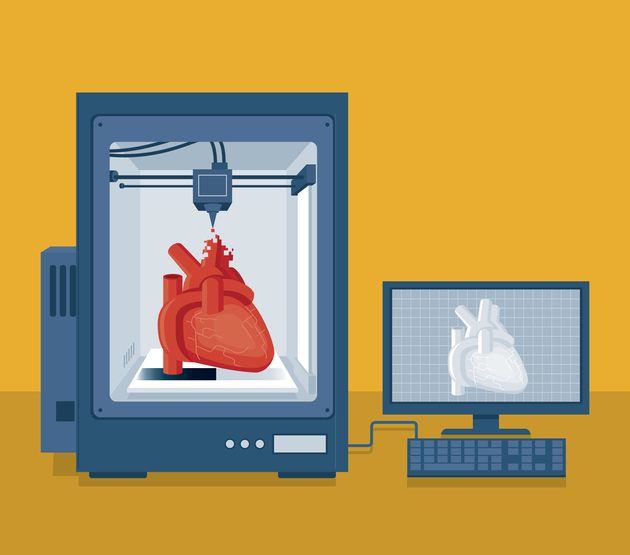
Thanks to science fiction, there are plenty of ideas for creating new body parts on demand. Now, advancements in 3D printing are slowly turning those ideas reality.
Until recently, rare or complex congenital or cardiac conditions could only be studied using samples extracted from cadavers. Thanks to technological advancements, healthcare practitioners are able to print anatomical models of rare cardiac anatomy, for example, from CT scans of patients.
Current State
Three uses of 3D printing are already gaining traction as feasible medical businesses. These include:
- The manufacturing of custom hearing aids
- The remote production of implants, dental crowns and bridges
- The mass production of prosthetics
Overall, medical practitioners are already using 3D printed devices on a small scale. While the jump to printing full organs is more complicated and an intricate task, researchers are already laying the groundwork.
What Does the Future Hold?
According to the United Network for Organ Sharing (UNOS), recent figures show that the current average cost of an organ transplant in the US can go up to more than $1 million. Additionally, UNOS estimates that over 113,000 patients in the US are currently waiting for an organ transplant. Now, technology such as 3D printing may end up reducing the need for donated organs, saving more lives than ever.
Currently, researchers are looking into the possibility of printing artificial blood vessels. This concept is also being tested at a few other centers to create 3D print heart valves.
In addition to this, there are very real possibilities of implantable 3D printed living organs for transplant into human patients soon. In this regard, 3D printing is gradually entering the market to not only facilitate pre-surgery calculations for physicians but also to improve the quality of patient care.
Some Considerations
3D printing in the field of medicine comes with a new set of legal and health questions that hospitals will need to consider. Therefore, health centers will require licensing to use such technology. Hospitals and research centers can also copyright their designs.
The technology for 3D printing has great potential to significantly modify health care delivery as well organization models in various areas of clinical specialization. However, the evolution of 3D printing in the healthcare sector greatly depends on partnerships with different stakeholders in the sector.




